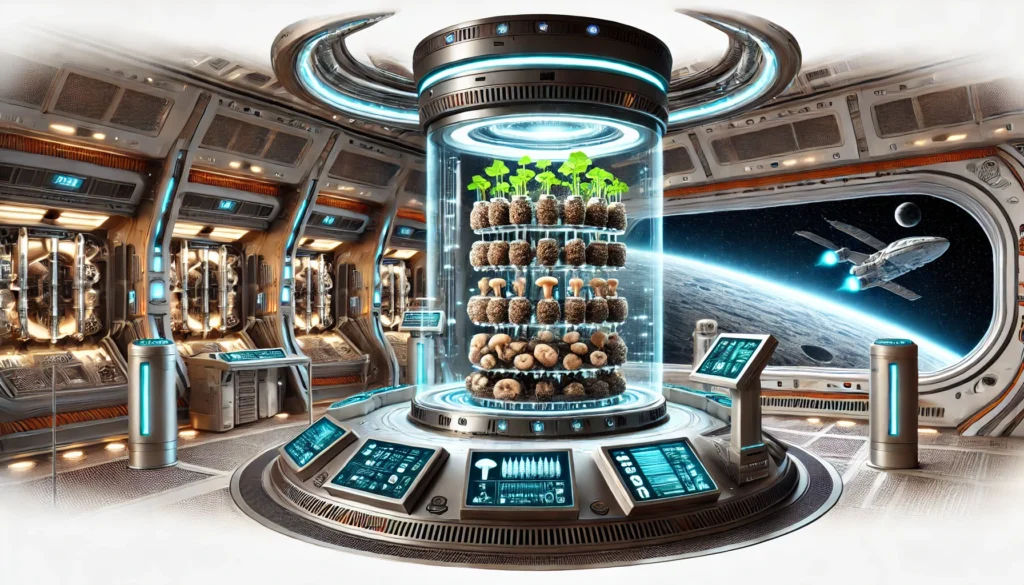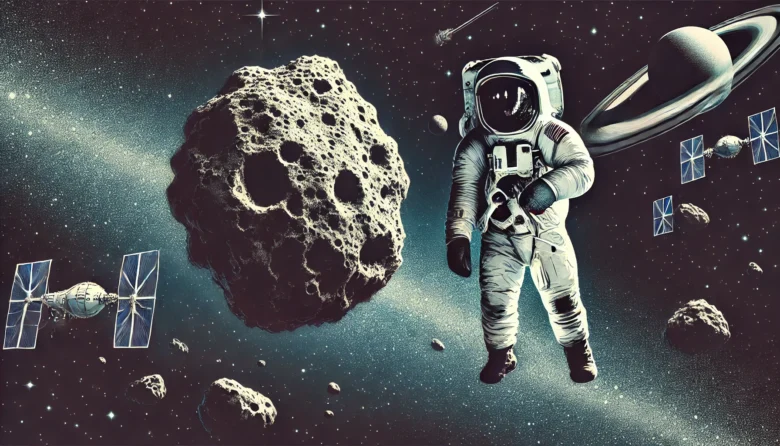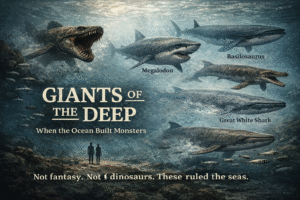Space travel has long been a fascinating subject, filled with dreams of exploration, but it also presents many challenges. One of the biggest hurdles in long-distance space journeys is food supply. Recent research suggests that asteroids may offer an unexpected solution—space travellers could use asteroids to create food! Imagine astronauts turning space rocks into biological material to sustain themselves. This new approach may redefine long-term space travel, ensuring that future missions can travel farther without running out of food.
The Search for Sustainable Space Food
As humanity prepares for extended space exploration, one question keeps coming up: How do we feed astronauts on long journeys to other planets? Traditional food supply options have limitations. However, a groundbreaking study has come forward with an exciting possibility: converting asteroids into food for space travelers.
In the vast expanse of space, asteroids are plentiful. These rocky bodies may hold the key to unlocking sustainable food sources. By harnessing biotechnology, we can potentially transform asteroid matter into edible biomass, which could be a game-changer for the future of space missions.
The Science Behind Asteroids as a Food Source
Scientists have discovered that certain asteroids, rich in organic matter, can be used to grow food by creating a sustainable biomass. This concept might sound like science fiction, but it has a solid scientific basis. The research was published in a renowned astrobiology journal and demonstrated that using the resources already available in space could be the solution to one of the most pressing problems of long-distance space travel.
The key lies in the material composition of asteroids, many of which contain carbon-based compounds. By breaking these compounds down and feeding them to microorganisms, scientists believe they can create biomass. This biomass could then be used as food, creating a self-sustaining system for astronauts. Imagine being able to grow food using nothing more than asteroid material and some biological engineering—this could mean the difference between survival and starvation on missions that span years.
Why Asteroids?
Asteroids, particularly carbonaceous chondrites, contain a variety of organic molecules that could serve as the raw material for such processes. Space agencies and defence departments are already exploring this possibility, hoping to build a technology that turns these molecules into food.
Microbial Engineering: The process involves feeding asteroid matter to engineered microbes, which in turn create a form of edible biomass. This can either be consumed directly or processed into more familiar food forms.
Resource Availability: With millions of asteroids in the asteroid belt, the raw material for this process is abundant and accessible. Each mission could potentially tap into this vast resource to produce food as needed.

Real-World Application: The American Defense Department’s Research
The U.S. Defense Department’s Defense Advanced Research Projects Agency (DARPA), renowned for its pioneering innovations, is one of the key organizations investigating this concept. DARPA has funded various studies to understand how asteroid material could be used for different purposes, including food production.
One of their projects, known as the “Asteroid Belt Project,” aims to create bioreactors that astronauts could take into space. These bioreactors would convert asteroid material into consumable food, solving the problem of food scarcity on long missions to Mars and beyond.
Challenges to Overcome
While the concept is promising, there are hurdles to making asteroid-based food a reality.
Cost and Logistics: Extracting material from asteroids and processing it into food is still an expensive and complicated task. However, technological advancements are rapidly bringing costs down.
Nutritional Balance: While biomass can provide calories, ensuring that this food contains all the necessary nutrients for human health is another challenge. Scientists are working on ways to balance this new form of food to meet dietary needs.
Public Perception: Another challenge could be convincing astronauts (and eventually, the public) to eat food derived from asteroid materials. However, necessity might outweigh hesitation in the long run.
Conclusion: A New Era of Space Exploration
Asteroids could very well be the food source of the future for long-duration space missions. With millions of tons of material available in space, this study opens up a new chapter in space exploration. The ability to grow food on demand using asteroid material would not only cut down on mission costs but also ensure that astronauts can survive and thrive on missions to other planets. As the research continues, we might be closer than ever to a future where space travel is sustainable and limitless.
Author’s Note
The future of space exploration is more exciting than ever. The idea that we can turn asteroids into food shows just how innovative humanity can be when facing challenges. This discovery could pave the way for longer space missions and new horizons for exploration.
G.C., Ecosociosphere contributor.




